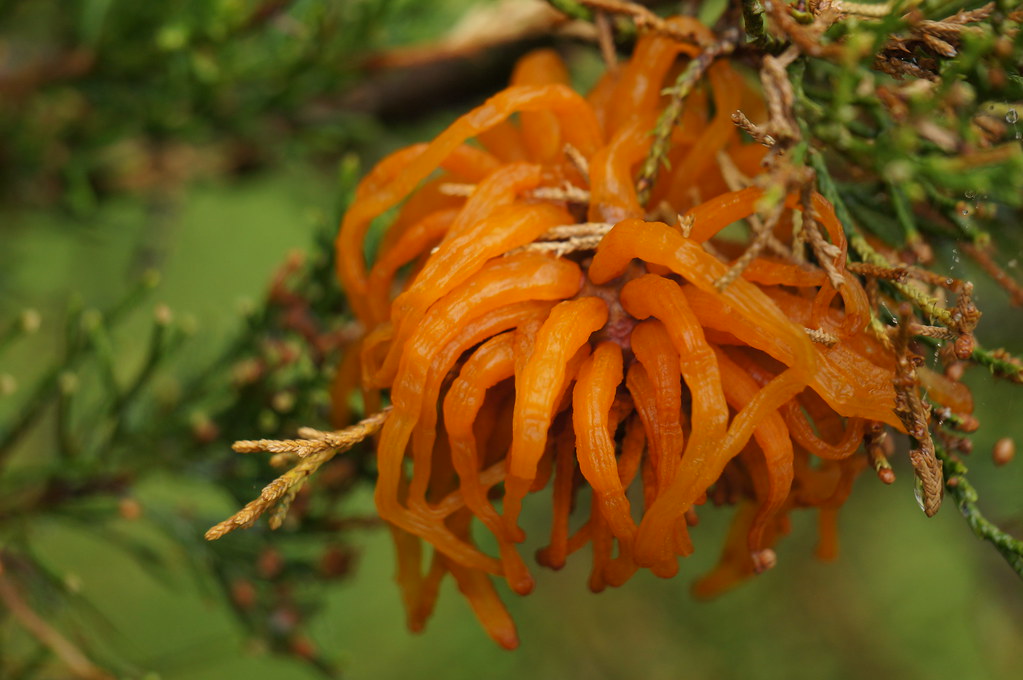| If I had not removed the fungal galls, the tiny brown protrusions (called telia) that you can see in the previous photo would have absorbed water from the warm spring rains and transmogrified into these jelly-like orange horns composed of thousands of two-celled spores called teliospores. The telia go through multiple swell-shrink cycles as they absorb water and then dry out. With each cycle, apparently the horns get longer and release more fungal spores. From what I understand the fungal galls typically don't cause much damage to the junipers, but if the spores land on young apple (Malus spp.) leaves or twigs under appropriate moisture and temperature conditions, they can infect those plant tissues. From what I understand, the fungal galls typically don't cause much damage to junipers, but since I have a crabapple growing nearby, I'm trying to remove any galls that I find to reduce the infection risk on the crabapple so that the tree stays healthy and able to produce flowers for the insects and fruit for the birds. (My limited understanding of this topic comes from reading materials prepared by experts at institutions like Cornell and the Missouri Botanical Garden. Photo by Mike Lewinski) |


